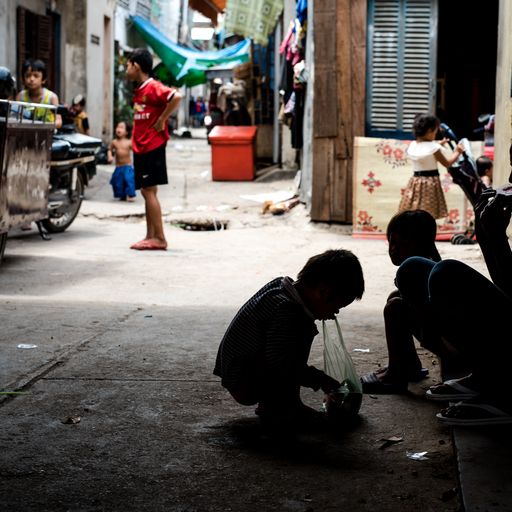Cambodia’s sex industry is a nuanced and multifaceted issue, deeply rooted in the country’s history, socio-economic struggles, and cultural dynamics. While the red-light districts of Phnom Penh, Siem Reap, and Sihanoukville are often depicted as bustling hubs of nightlife, they are stark reminders of systemic gender inequality, poverty, and exploitation. For the women within this industry, life is a delicate balancing act—between survival, societal stigma, and the very faint hope of a better future.
The Historical and Socio-Economic Context
The sex industry in Cambodia is inextricably tied to the nation’s turbulent history. The Khmer Rouge regime (1975-1979), a radical communist movement that came to power after a devastating civil war, decimated the country’s economy, infrastructure, and social fabric. The subsequent decades of recovery saw widespread poverty, limited opportunities for women, and a growing reliance on informal cash-based economies.
Most women enter the sex industry due to economic necessity, while some are trafficked entirely against their will. With approximately 17.8% of Cambodians living below the national poverty line, according to the World Bank, sex work often becomes one of the few viable options for women to provide for their families. This is particularly true for rural women, who frequently migrate to urban centres in search of income opportunities. In many cases, they are lured by promises of legitimate employment, only to find themselves coerced or forced into prostitution.
Cambodia’s sex industry is closely linked to human trafficking. The Global Slavery Index estimates that thousands of individuals, predominantly women and girls, are victims of forced sexual exploitation in the country. Vulnerable populations, such as orphans, ethnic minorities, the mentally disabled, and those with limited education, are at heightened risk.
Despite efforts by the Cambodian government and international organisations to combat trafficking, enforcement remains very inconsistent. Corruption within law enforcement and judicial systems often hinders progress, allowing traffickers to operate with impunity. Meanwhile, the stigma surrounding victims of trafficking and sex work further compounds their plight, isolating them from support networks and perpetuating cycles of abuse.
The Human Cost
For most women in Cambodia’s sex industry, their work is not a choice but a consequence of limited alternatives. They face daily risks, including violence, unplanned pregnancy and exposure to sexually transmitted infections. Access to healthcare is often inadequate, leaving many women without the resources to address physical and mental health issues. Cambodian societal attitudes toward sex work are also deeply stigmatizing. Women in the industry are frequently ostracized by their communities, even if their earnings support their families. This stigma extends to their children, who may face bullying or exclusion due to their mothers’ work. It is a difficult, dangerous and often miserable existence.
Working Towards Change
Several NGOs and grassroots organizations are working tirelessly to support women in Cambodia’s sex industry. Groups like Agape International Missions (AIM) and the Cambodian Women’s Development Agency (CWDA) provide vocational training, counselling, and healthcare services to women seeking to leave the industry. These organizations also advocate for policy reforms to protect sex workers and combat trafficking more effectively (AIM, 2020; CWDA, 2021).
Asian Aid, an Australian organisation, supports a unique program that cares for the babies and toddlers caught up in the prostitution industry. Through NIghtCare centres in red-light disctrict areas, little ones who would otherwise be alone at night, or in danger of abuse while their mothers work, have a safe place to stay, play, eat, and sleep.
A Judgement-Free Future
 Addressing the complexities of Cambodia’s sex industry requires a multi-pronged approach. Economic empowerment is key; providing women with education, skills training, and access to fair-paying jobs can reduce their reliance on sex work. Simultaneously, combating trafficking demands stronger law enforcement, judicial reforms, and international cooperation to dismantle trafficking networks. All of this requires money that the Cambodian government either does not have or is not currently willing to invest. Equally important is changing societal attitudes, both locally and internationally. Reducing stigma and promoting compassion toward sex workers can create an environment where women feel safe seeking support. Public awareness campaigns and community dialogues can play a crucial role in fostering understanding and empathy. Non-judgemental support is often the only way women feel empowered enough to ask for help to leave the industry.
Addressing the complexities of Cambodia’s sex industry requires a multi-pronged approach. Economic empowerment is key; providing women with education, skills training, and access to fair-paying jobs can reduce their reliance on sex work. Simultaneously, combating trafficking demands stronger law enforcement, judicial reforms, and international cooperation to dismantle trafficking networks. All of this requires money that the Cambodian government either does not have or is not currently willing to invest. Equally important is changing societal attitudes, both locally and internationally. Reducing stigma and promoting compassion toward sex workers can create an environment where women feel safe seeking support. Public awareness campaigns and community dialogues can play a crucial role in fostering understanding and empathy. Non-judgemental support is often the only way women feel empowered enough to ask for help to leave the industry.
The women of Cambodia’s sex industry are are individuals with hopes, fears, and families that they love. While their circumstances often reflect broader systemic failures, they also illuminate opportunities for change. By addressing the root causes of exploitation and supporting women’s empowerment, Cambodia can take meaningful steps toward a future where no woman is forced to choose between safety, dignity and survival.
– By Lynnette Lounsbury
A lecturer in Communications and History at Avondale University
References:
Agape International Missions. (2020). Annual report. Retrieved from https://www.agapewebsite.org
Cambodian Women’s Development Agency. (2021). Empowering women in Cambodia. Retrieved from https://www.cwda.org.kh
Chab Dai. (2020). Annual report: Combating trafficking in Cambodia. Retrieved from https://www.chabdai.org
Global Slavery Index. (2022). Cambodia: Modern slavery report. Retrieved from https://www.globalslaveryindex.org
United Nations Office on Drugs and Crime. (2021). Southeast Asia trafficking report. Retrieved from https://www.unodc.org
Women’s Network for Unity. (2021). Advocacy for sex workers’ rights. Retrieved from https://www.wnu.org.kh
World Bank. (2022). Cambodia overview. Retrieved from https://www.worldbank.org
